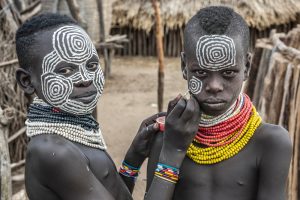Understanding Kilimanjaro Hike Temperature
One of the most important factors to consider when embarking on a Kilimanjaro hike is the temperature variation you will encounter throughout your journey. Understanding the temperature changes on the mountain can help you better prepare for the challenges ahead and ensure a safe and enjoyable trek. In this article, we will explore the factors affecting Kilimanjaro hike temperature and the importance of understanding these variations.
Factors Affecting Kilimanjaro Hike Temperature
Several factors contribute to the temperature variations experienced during a Kilimanjaro hike. The primary factors include altitude, time of day, season, and proximity to the equator.
Altitude plays a significant role in determining the temperature on Kilimanjaro. As you ascend the mountain, the air becomes thinner, leading to a decrease in temperature. On average, the temperature drops by approximately 6.5 degrees Celsius for every 1,000 meters of altitude gained. This means that the summit of Kilimanjaro, at 5,895 meters above sea level, can be significantly colder than the base of the mountain.
The time of day also affects the temperature on Kilimanjaro. Nights are generally colder than days, with temperatures dropping significantly after sunset. It is not uncommon for temperatures to reach below freezing at night, especially at higher altitudes. Therefore, it is essential to be prepared for these temperature fluctuations by bringing appropriate clothing and gear.
The season in which you choose to hike Kilimanjaro also influences the temperature you will encounter. The mountain experiences two main seasons – the dry season and the wet season. During the dry season (June to October), temperatures are generally cooler and more stable, making it a popular time for trekking. In contrast, the wet season (November to May) brings higher temperatures and increased precipitation, which can affect the overall hiking experience.
Lastly, Kilimanjaro’s proximity to the equator contributes to its temperature variations. Despite being located near the equator, the mountain’s high altitude results in colder temperatures than one might expect. This unique combination of factors makes Kilimanjaro a challenging yet rewarding destination for hikers seeking a diverse climate experience.
Importance of Understanding Temperature Variation
Understanding the temperature variations on Kilimanjaro is crucial for a successful and safe hike. Proper preparation, including packing the right clothing and gear, can help you stay comfortable and avoid potential health risks associated with extreme temperatures.
By knowing what to expect in terms of temperature changes, hikers can plan their trek accordingly and make informed decisions about when to rest, eat, and adjust their clothing layers. Staying warm and dry is essential for maintaining your energy levels and avoiding hypothermia or frostbite, especially at higher altitudes where the temperature can drop significantly.
In conclusion, understanding Kilimanjaro hike temperature is vital for anyone embarking on this challenging adventure. By considering the factors that influence temperature variation and preparing accordingly, hikers can enjoy a safe and rewarding experience on Africa’s highest peak. For those interested in booking a Kilimanjaro hike with expert guides and support, Sunset Africa Safari offers tailored tours to suit all levels of experience. For booking requests, please contact info@sunsetafricasafari.com.


